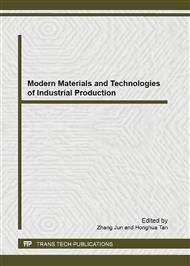p.234
p.240
p.244
p.249
p.254
p.261
p.266
p.273
p.277
Development of Performance Optimization of Recycled Aggregate
Abstract:
Recycled aggregate concrete (RAC) differ from natural aggregate concrete in mechanical and durability properties. The poorer qualities of recycled aggregate (RA) limit utilization of RAC in engineering. Cement mortar attached on the surface of recycled aggregate result in higher water absorption rate. Also, interfacial zone between recycled aggregate and new mortar consist of loose and porous hydrates. Investigation is devoted to effects of different approaches on improving performance of RA to compensate the lower quality of RA. The pre-soaking treatment approach reduces the old cement mortar and removes the weaker link in interfacial zone. Moreover, The two-stage mixing approach (TSMA) is adopted, leads to the formation of a thin layer of cement slurry on the surface of RA which permeates into the porous old cement mortar, filling up the old cracks and voids for increasing compressive strength. Correlations in methods have been obtained and discussed.
Info:
Periodical:
Pages:
254-257
Citation:
Online since:
September 2013
Authors:
Price:
Сopyright:
© 2013 Trans Tech Publications Ltd. All Rights Reserved
Share:
Citation:


